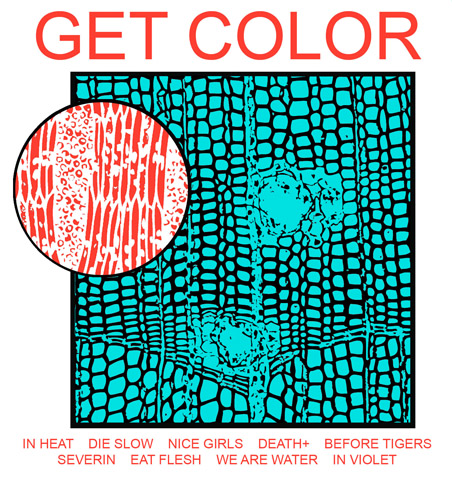Los Angeles noise outfit HEALTH’s live incarnation is certainly a polarising experience; at a show I attended of theirs last year, broadcasted opinion varied from ‘abhorrent’ (the music being described as a ‘screeching drone’, plagued by mixing issues and a lack of coherence) to ‘euphoric’ (seismic sound levels, thundering percussion and strained vocals coalescing, but retaining their crude forms). It seemed to suggest that one had to ‘buy into’ HEALTH’s methodology to enjoy their show, and suspend the belief that ‘everything HEALTH are doing here could be done slightly better’ (or at least, I did). Which is fair enough; especially with a band as seemingly impenetrable as this.
Their 2007 self-titled debut is an orgy of grinding guitars, distant/shrieked vocals and crashing percussion, with occasional synth bursts for variation; and was generally received as competent, ‘raw’ and familiar sounding noise rock. Essentially, it showed potential that was then somewhat unrealised. Here now, the follow-up Get Color, excels in transposing all these facets of the ‘HEALTH sound’ into a far more taut, obligingly accessible format. Skipping right to the album’s last track, the six-minute “In Violet” (HEALTH’s longest track to date) displays this developed sound at its most evident: the song is a genuinely ‘moving’ closer – a stuttering, metallic loop throughout, under a typically distant vocal and a gentle, yawning synth, punctuated by sharp bursts of Fuck Buttons-esque static. It really is a surprising piece; evoking a baleful, futuristic insubstantiality a world away from the debut.
Both Crystal Castles’ startlingly successful remix of first album track “Crimewave” and the well-received remix album DISCO, (featuring generally electro edits of the debut’s more coherent moments by bloggable artists such as Pink Skull, Pictureplane, Acid Girls, etc) seem to have made their mark on Get Color, as virtually every song is configured for a remix. First single “Die Slow” is the most immediate example of this newfound interest in danceability. The fact that the 7” single’s Pictureplane remix is essentially redundant is testament to the track’s stammering groove, and this focus on rhythm is certainly more prevalent elsewhere. Once the swathes of noise on “Severin” die down, the racing drums and the tight, scratchy guitar emerge, and better, “We Are Water” rapidly defibrillates and crashes through its four minutes; perhaps being the best summation of HEALTH’s ‘sound’ yet.
Fans of HEALTH’s original, noise-rock guise won’t be disappointed here, however, they might be underwhelmed as there is certainly nothing with the immediate, tribal intensity of “Zoothorns” or “Crimewave” here. Think more “Perfect Skin” or “Glitter Pills” for the best indication of what this is like. This movement away from their noise ‘roots’ isn’t universally beneficial as some tracks simply lack the focus that most of the debut’s possessed. “Before Tigers” endlessly scales itself up and somehow dissipates before anything at all can happen, and “Eat Flesh” (despite the cool title) is just a worse version of the succeeding “We Are Water” as the pointless repetition of its abrasive guitar outstays its welcome. That said, it is highly likely that ardent fans of the first album will disagree, and be that as it may; this would mean the album is a greater success than I give it credit for.
Get Color is undeniably an accomplished record though; it clearly shows HEALTH maturing and refining themselves; drawing in and ingratiating influences; adapting their sound rather than re-inventing it. Fans of the first album may be somewhat disappointed, but Get Color is certain to attract and interest those alienated or uninterested in the noise aesthetic till now.

